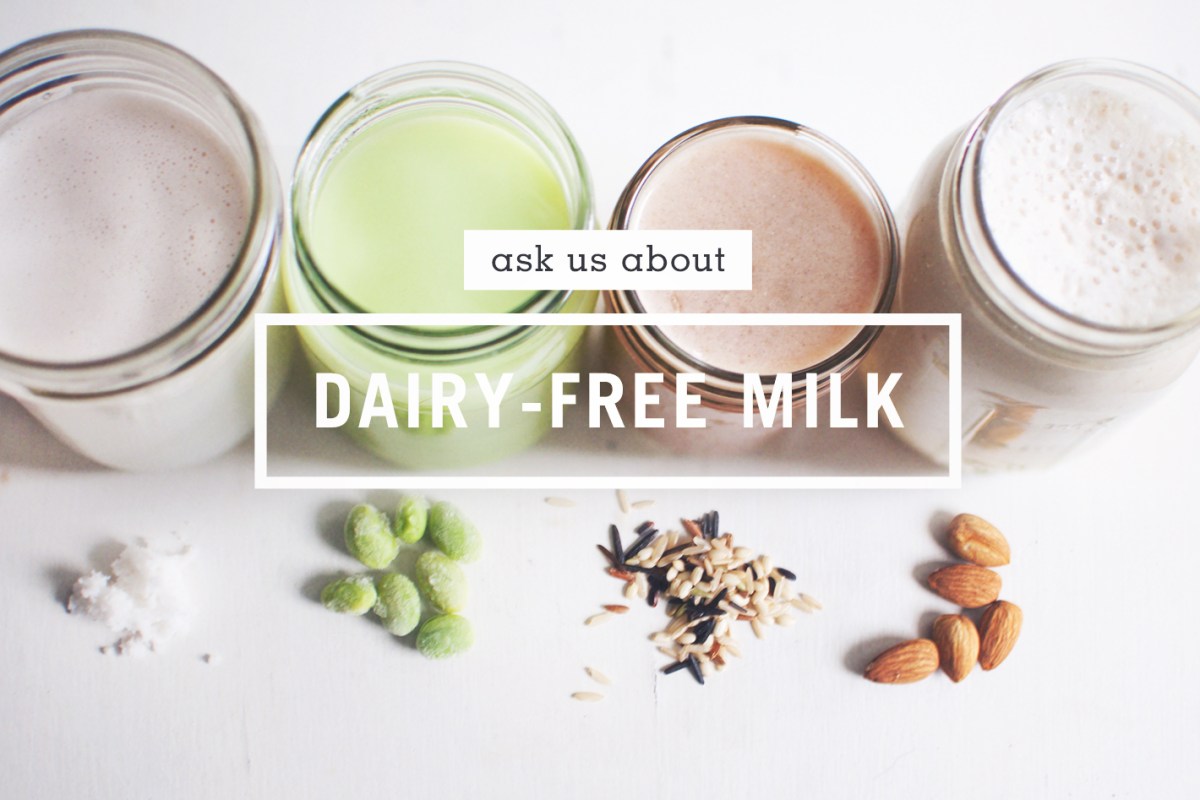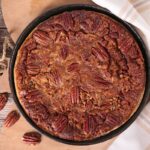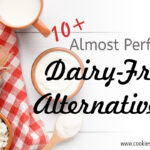Embark on a culinary adventure beyond the familiar landscape of dairy! This exploration unveils a world of surprisingly delicious and versatile dairy-free alternatives, transforming your perception of plant-based cooking. From creamy cashew cheese sauces to fluffy oat milk lattes, we’ll uncover hidden gems and innovative techniques that redefine dairy-free eating. Prepare to be amazed by the incredible variety and surprising nutritional benefits awaiting you.
We’ll delve into lesser-known milk alternatives, revealing their unique qualities and production processes. Discover inventive recipes for dairy-free cheeses, yogurts, and baking essentials, complete with step-by-step instructions and vibrant visuals. Learn how to master the art of dairy-free cooking, creating savory dishes and sauces that rival their traditional counterparts in both taste and texture. This journey will empower you to confidently embrace a dairy-free lifestyle without compromising on flavor or satisfaction.
Cheese Alternatives
Stepping beyond the familiar realm of tofu and vegan cheese slices unveils a world of exciting dairy-free cheese possibilities. This exploration delves into creating unique cheese alternatives using diverse plant-based ingredients, highlighting the challenges and triumphs of mimicking the meltability and textures of various cheeses. We’ll also craft a luscious dairy-free cheese sauce perfect for pasta dishes.
Nut-Based Cashew Cheese
Imagine a creamy, tangy cheese, perfect for spreading or adding to salads, made entirely from cashews. This recipe showcases the versatility of nuts in creating dairy-free delights.
- Soaking and Blending: Begin by soaking 1 cup of raw cashews in hot water for at least 30 minutes, or until softened. This step is crucial for achieving a smooth, creamy texture. Drain the cashews and blend them in a high-speed blender with ½ cup of water until completely smooth and creamy. A vibrant, off-white cream will emerge from the blender.
- Flavor Infusion: Add 2 tablespoons of nutritional yeast for a cheesy flavor, 2 tablespoons of lemon juice for tanginess, 1 tablespoon of apple cider vinegar for a sharper edge, and a pinch of salt and garlic powder to taste. Blend again until well combined. The mixture will thicken slightly as the flavors meld together. The color will remain a pale, creamy off-white.
- Setting and Serving: Pour the mixture into a small container and refrigerate for at least 2 hours, or until firm. The cashew cheese will set, creating a spreadable consistency. The final product resembles a pale, creamy cheese spread, ready to be enjoyed on crackers, vegetables, or as a salad topping.
Seed-Based Sunflower Seed Cheese
This recipe utilizes sunflower seeds to craft a robust, slightly nutty cheese alternative. The texture differs from cashew cheese, offering a more substantial, crumbly experience.
- Seed Preparation: Toast ½ cup of sunflower seeds in a dry skillet over medium heat for about 5 minutes, stirring frequently, until lightly browned and fragrant. This step enhances the flavor and adds a subtle crunch. The seeds will turn a slightly darker shade of their natural color.
- Blending and Seasoning: Transfer the toasted seeds to a food processor and pulse until finely ground but not completely pulverized. Add ¼ cup of water, 1 tablespoon of nutritional yeast, 1 tablespoon of lemon juice, and salt and pepper to taste. Process until a coarse paste forms. The mixture will take on a pale yellow color with visible small seed fragments.
- Pressing and Shaping: Transfer the mixture to a cheesecloth-lined strainer set over a bowl. Press gently to remove excess liquid. Shape the mixture into a small disk or log and refrigerate for at least 30 minutes to firm up. The resulting cheese will have a pale yellow hue and a slightly crumbly, textured consistency.
Vegetable-Based Carrot “Cheese”
Surprisingly, vegetables can be transformed into creamy, cheesy delights. This recipe showcases the surprising potential of carrots.
- Cooking and Pureeing: Boil 1 cup of peeled and chopped carrots until tender. Drain well and puree in a blender or food processor until completely smooth. The vibrant orange of the carrots will create a bright, rich puree.
- Flavor Enhancement: Add 2 tablespoons of nutritional yeast, 1 tablespoon of tahini for creaminess, 1 tablespoon of lemon juice for brightness, and salt and pepper to taste. Blend until smooth and creamy. The color will remain a vibrant orange, though slightly muted by the other ingredients.
- Finishing Touches: For a sharper flavor, add a teaspoon of Dijon mustard. The mixture can be used immediately as a spread or refrigerated for a firmer consistency. The final product is a creamy, vibrant orange spread with a subtle sweetness from the carrots.
Melting Challenges and Successes
Replicating the melting properties of cheese using plant-based ingredients presents unique challenges. Nuts and seeds, while creating creamy textures, often lack the elasticity and stretchiness of melted dairy cheese. However, the addition of ingredients like agar-agar or tapioca starch can improve meltability. Success lies in finding the right balance of fats, starches, and emulsifiers to create a smooth, meltable consistency. For example, cashew cheese, due to its high fat content, melts more readily than sunflower seed cheese.
Dairy-Free Cheese Sauce for Pasta
This recipe creates a creamy, flavorful cheese sauce perfect for pasta dishes.
- Base Sauce: Sauté 1 tablespoon of olive oil with 2 tablespoons of all-purpose flour in a saucepan over medium heat until lightly browned. This creates a roux, which will thicken the sauce. The mixture will become a light golden-brown color.
- Adding Liquids: Gradually whisk in 2 cups of unsweetened plant-based milk (cashew or almond milk works well) until smooth. Bring to a simmer, whisking constantly to prevent lumps. The sauce will begin to thicken as the milk heats and combines with the roux.
- Cheese Incorporation: Reduce heat to low and stir in 1 cup of your favorite dairy-free cheese (from the recipes above or store-bought). Continue stirring until the cheese is melted and the sauce is smooth and creamy. The sauce will take on the color and flavor of the chosen cheese.
- Seasoning and Serving: Season with salt, pepper, garlic powder, and nutritional yeast to taste. Serve immediately over your favorite pasta. The final sauce will be a rich, creamy consistency, ideal for coating pasta.
Dairy-Free Yogurt and Alternatives
Dairy-free yogurt alternatives offer a delicious and nutritious way to enjoy the creamy texture and probiotic benefits of yogurt without the dairy. While soy yogurt has been a popular option, a wider array of exciting alternatives are now available, each with its own unique flavor profile and nutritional advantages. This section will explore the fascinating world of coconut yogurt and other dairy-free options, highlighting their benefits and providing a recipe for a delightful dairy-free parfait.
Coconut Yogurt Fermentation and Nutritional Benefits
Coconut yogurt, unlike its dairy counterpart, undergoes a fermentation process using specific bacterial cultures, typically *Lactobacillus* species, which act upon the coconut cream. This fermentation process transforms the coconut cream, creating a tangy, slightly acidic, and creamy texture reminiscent of traditional yogurt. The fermentation process not only enhances the flavor and texture but also contributes significantly to the nutritional profile. While the exact nutritional content can vary depending on the brand and specific ingredients, coconut yogurt generally provides a good source of probiotics, beneficial bacteria that support gut health. Compared to dairy yogurt, coconut yogurt is naturally lower in lactose and casein, making it suitable for individuals with lactose intolerance or casein allergies. It also tends to be lower in saturated fat than full-fat dairy yogurt, although this depends on the type of coconut cream used. Furthermore, coconut yogurt often contains medium-chain triglycerides (MCTs), which are easily digested and can provide a quick source of energy.
Dairy-Free Yogurt Parfait Recipe
This vibrant parfait showcases the versatility of dairy-free yogurt, combining creamy coconut yogurt with a variety of textures and flavors.
Imagine a tall, clear glass, layered with visual delight. The bottom layer is a vibrant swirl of thick, creamy coconut yogurt, its pale white color punctuated by tiny specks of coconut. Atop this, a layer of crunchy, golden-brown granola adds a satisfying textural contrast. Next, a burst of color comes from a layer of fresh, ruby-red raspberries, their juicy sweetness peeking through. Finally, a sprinkle of finely chopped, toasted almonds provides a delicate crunch and a hint of nutty flavor, crowning the parfait with a sophisticated touch.
Ingredients:
* 1 cup coconut yogurt (plain or vanilla)
* ½ cup granola
* ½ cup fresh raspberries
* ¼ cup toasted almonds, finely chopped
* Optional: A drizzle of honey or maple syrup for extra sweetness
Instructions:
1. Layer the coconut yogurt, granola, raspberries, and almonds in a tall glass, repeating the layers as desired.
2. Drizzle with honey or maple syrup, if desired.
3. Serve immediately and enjoy the delightful combination of textures and flavors.
Probiotic Content and Gut Health Benefits of Dairy-Free Yogurt Alternatives
Various dairy-free yogurt alternatives offer differing probiotic profiles, impacting their gut health benefits. Coconut yogurt, as mentioned, often contains *Lactobacillus* strains known for their probiotic properties. Almond yogurt, another popular choice, may also contain probiotics, though the specific strains and their abundance can vary greatly depending on the brand. Soy yogurt similarly contains probiotics, often from strains like *Lactobacillus acidophilus*, although the fermentation process and the resulting probiotic content might be less consistent than in coconut yogurt. The overall gut health benefits depend not only on the type of yogurt but also on the individual’s gut microbiome and other dietary factors. It’s important to note that while these yogurts offer probiotic benefits, the amount and types of probiotics can differ significantly. Choosing a brand that clearly lists the specific probiotic strains and their CFUs (colony-forming units) per serving can help in making an informed decision.
Dairy-Free Baking

Embark on a delicious journey into the world of dairy-free baking, where rich, decadent treats are crafted without a single drop of dairy. Discover how simple substitutions can transform your favorite recipes into masterpieces that are both satisfying and allergy-friendly. We’ll explore the secrets to achieving the perfect texture and flavor, whether you’re whipping up a moist chocolate cake or delicate, melt-in-your-mouth cookies.
Dairy-Free Chocolate Cake Recipe
This recipe provides a decadent dairy-free chocolate cake, rich in flavor and moist in texture. The substitutions for butter, milk, and eggs ensure a delicious result without compromising on taste or quality.
- Ingredients: 1 ¾ cups all-purpose flour, 2 cups granulated sugar, ¾ cup unsweetened cocoa powder, 1 ½ teaspoons baking powder, 1 ½ teaspoons baking soda, 1 teaspoon salt, 1 cup dairy-free milk (almond or soy milk work well), ½ cup unsweetened applesauce, ½ cup vegetable oil, 2 teaspoons vanilla extract, 2 tablespoons apple cider vinegar, 1 cup boiling water.
- Instructions: Preheat oven to 350°F (175°C). Grease and flour two 9-inch round baking pans. In a large bowl, whisk together flour, sugar, cocoa powder, baking powder, baking soda, and salt. Imagine the rich brown cocoa powder blending seamlessly with the other dry ingredients, creating a visually appealing mixture.
- In a separate bowl, combine dairy-free milk, applesauce, oil, and vanilla extract. Picture the creamy applesauce swirling into the milk, creating a smooth, homogenous batter base. Add this wet mixture to the dry ingredients and stir until just combined. Do not overmix. The batter will appear thick and slightly lumpy.
- Gradually whisk in the boiling water until the batter is smooth and glossy. The batter will transform from a thick mixture to a rich, dark, and fluid consistency, due to the addition of boiling water. The steam from the water will add moisture to the cake.
- Pour the batter evenly into the prepared pans. Visualize the dark, rich batter filling the pans, promising a delicious chocolate cake. Bake for 30-35 minutes, or until a wooden skewer inserted into the center comes out clean. A toothpick inserted into the cake will come out clean, signaling it is perfectly baked.
- Let the cakes cool in the pans for 10 minutes before inverting them onto a wire rack to cool completely. The cakes will slightly deflate as they cool, but will still retain their moist texture.
Adapting a Classic Cookie Recipe to Be Dairy-Free
This section details how to adapt a standard cookie recipe, highlighting the impact of different dairy-free butter substitutes on texture and taste. Using various substitutes, like coconut oil, vegan butter, or even applesauce, provides different textural and taste profiles.
Different dairy-free butter substitutes will significantly alter the texture and taste of your cookies. For example, coconut oil will impart a subtle coconut flavor and a slightly chewier texture, while vegan butter tends to provide a more traditional cookie-like consistency and a neutral flavor. Applesauce, on the other hand, creates a softer, more cake-like cookie. Imagine the transformation – a crispy, buttery cookie becoming a chewy, coconut-infused delight or a softer, cake-like treat.
Dairy-Free Baking Ingredient Substitutions
Understanding the proper substitutions is key to successful dairy-free baking. The following table Artikels common baking ingredients and their effective dairy-free alternatives. Each substitution offers a different outcome, allowing for creative adjustments based on desired texture and taste.
| Dairy Ingredient | Dairy-Free Substitute | Reason for Substitution |
|---|---|---|
| Butter | Vegan butter, coconut oil, applesauce | Provides richness and moisture; different substitutes offer varying textures. |
| Milk | Almond milk, soy milk, oat milk | Adds moisture and helps bind ingredients. Each type of milk offers a slightly different flavor profile. |
| Eggs | Applesauce, flax eggs (flaxseed meal mixed with water), mashed banana | Acts as a binder and leavening agent. Different substitutes provide different levels of moisture and binding power. |
| Cream Cheese | Tofu cream cheese, vegan cream cheese | Provides creaminess and tang; offers a similar texture and taste to traditional cream cheese. |
From the creamy richness of cashew-based sauces to the surprising versatility of tiger nut milk, the world of dairy-free substitutes is brimming with exciting possibilities. This exploration has unveiled a treasure trove of innovative recipes and techniques, demonstrating that a dairy-free lifestyle can be both delicious and incredibly fulfilling. We encourage you to experiment, explore, and discover your own favorite dairy-free delights. The journey of culinary innovation awaits!
Questions and Answers
What are the best dairy-free butter substitutes for baking?
Coconut oil, vegan butter sticks (like Miyoko’s Kitchen), and refined coconut oil are popular choices, each impacting texture differently. Experiment to find your preference.
Can I freeze dairy-free milk?
Yes, most dairy-free milks freeze well, but their texture might change slightly upon thawing. It’s best to use them within a few months of freezing.
How long do homemade dairy-free yogurts last?
Homemade dairy-free yogurts typically last for 5-7 days in the refrigerator. Proper fermentation and refrigeration are key to extending their shelf life.
Are all dairy-free cheeses suitable for melting?
No, not all are created equal. Some melt beautifully, while others remain firm. Recipes often specify which dairy-free cheese works best for melting.


